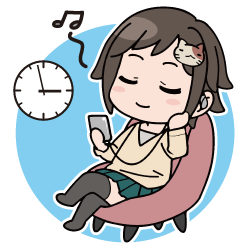
Give Your Ears a Rest
It is easy to forget that listening time goes hand in hand with listening volume. Almost everyone has had the experience of being caught up in their tunes without realising how much time has passed. It is important to listen to music with the mindset of protecting your hearing. From time to time, it is necessary to take breaks in order to reduce pressure on your ears. This will help preserve your sense of hearing.
As mentioned in the section entitled “A Warning About Volume”, perceptual senses are difficult to benchmark and apply limits to. Setting goals in your immediate environment, however, can be done via the application of a few guidelines. For instance, in loud work environments such as construction sites, workers are required to keep account of the time they are exposed to loud noises. This practice can be applied to any environment you frequent.
Sound is caught by auditory hair cells in the inner ear. These cells are called stereocilia. The function of stereocilia can be impaired by excessive auditory stimulation. If auditory hair cells are damaged, they lose the ability to distinguish various volumes and sounds.
When the ability to regulate sensitivity is damaged in auditory hair cells, small sounds become difficult to differentiate. At the same time, large sounds may become difficult to tolerate. This is a reduction in the dynamic range of your hearing; essentially, your ear has developed a problem regulating the various sounds that enter it.
The single biggest factor in hearing loss is volume. Volume plays an important role in the communication of ideas in conversation. It is also important in helping you understand the meaning and mood of musical compositions. However, in the normal activities of daily life, and whilst enjoying music, high volume sounds usually occur only momentarily; thus, they usually do not play a large role in hearing loss.
However, as mentioned in “A Warning About Volume”, the ear acclimatises itself to loud sounds. Normally, music listening is done at volumes that drown out your environment. This is especially the case with headphones and earphones. If no one informs you that your music is too loud, you will, without a second thought, continue listening at volume levels that are too loud for your ears.
It is important to take note of the volume of your music. Even listening to music at safe volumes can stress your ears and damage your hearing if your ears aren’t given time to rest.
In the days of vinyl records, a single album was recorded on two sides of a record. One side lasted less than thirty minutes. CDs and later, digital data formats changed that. Now, you can continue to listen to music with virtually no end in sight. Even if it is just a coffee or toilet break, it is important to take time away from the listening of music and give your ears a break.

